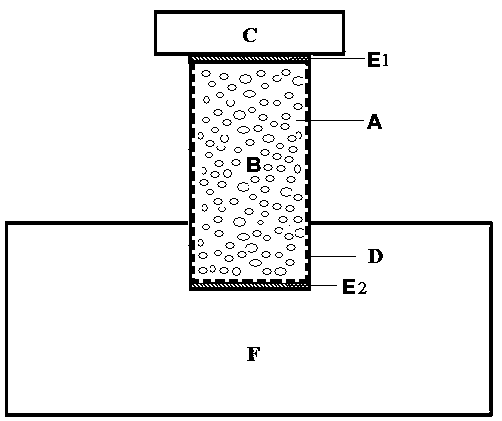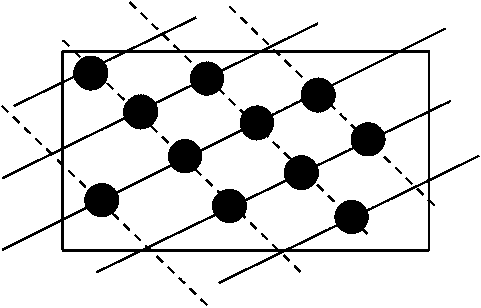In-situ self-sustaining contaminated soil restoring device based on plant bionics and method
A bionic technology for polluted soil and plants, applied in the restoration of polluted soil, etc., can solve problems such as affecting recycling, changing soil physical and chemical properties, and limited treatment efficiency, and achieves the effect of simple operation and labor saving
- Summary
- Abstract
- Description
- Claims
- Application Information
AI Technical Summary
Problems solved by technology
Method used
Image
Examples
Embodiment 1
[0044] In-situ self-sustaining repair device for contaminated soil based on plant bionics, the structure is as follows figure 1 shown. Including main body A, packing B, evaporator C, permeable membrane D and accessories E.
[0045] The main body A is a hollow pipe made of polypropylene material; the permeable membrane D is attached to the bottom of the main body A through the fitting E2, and directly attached to the pipe wall of the main body A; the filler B is tightly filled in the main body A and compacted; the evaporator C is passed through the fitting E1 is attached to the top of body A.
[0046] In this example, the main body A is a cylindrical hollow pipe with an inner diameter of 27mm, an outer diameter of 29mm, and a height of 98mm; in addition, it can also be made into a cuboid hollow pipe or hollow pipes of other shapes, and the thickness of the pipe wall can support the whole device. It is advisable; you can also choose other hydrophilic porous ceramic tubes or gr...
Embodiment 2
[0053] Determination of transpiration rate of in-situ self-sustaining remediation device for contaminated soil based on plant bionics and comparison with plant transpiration rate.
[0054] The transpiration rates of the in-situ self-sustaining remediation device for contaminated soil based on plant bionics of the present invention were measured in solution environment and soil environment, and compared with those of rice. The results are shown in Table 2.
[0055] Table 2 The transpiration rate of the restoration device of the present invention in solution and soil environment and its comparison with rice
[0056]
[0057] It can be seen from Table 2 that the transpiration rate of the remediation device in both the solution environment and the soil environment was significantly higher than that of rice in a short period. In addition, the repair device itself can be used for a long time in a long period, and is less restricted by the natural environment and conditions; plant...
Embodiment 3
[0060] The in-situ self-sustaining remediation method of polluted soil based on plant bionics is used to treat the pollutant solution.
[0061] The purpose of treating the polluted liquid in this embodiment is to verify that the water-soluble pollutants can be treated by the device and method of the present invention. The biologically threatening pollutants in the soil are also soluble in water, so this step is the first step in the verification of in-situ self-sustaining restoration of contaminated soil. The pollutants in the solution can be treated by the method described in the present invention, and the soil Pollutants that can be dissolved in water can also be drawn into the remediation device by transpiration through capillary phenomenon, and be adsorbed and disposed of. At the same time, this embodiment also proves that this method is also applicable to the field of sewage treatment.
[0062] The test results show that the treatment effect of the repair device and the ...
PUM
| Property | Measurement | Unit |
|---|---|---|
| The inside diameter of | aaaaa | aaaaa |
| Outer diameter | aaaaa | aaaaa |
Abstract
Description
Claims
Application Information
 Login to View More
Login to View More - R&D
- Intellectual Property
- Life Sciences
- Materials
- Tech Scout
- Unparalleled Data Quality
- Higher Quality Content
- 60% Fewer Hallucinations
Browse by: Latest US Patents, China's latest patents, Technical Efficacy Thesaurus, Application Domain, Technology Topic, Popular Technical Reports.
© 2025 PatSnap. All rights reserved.Legal|Privacy policy|Modern Slavery Act Transparency Statement|Sitemap|About US| Contact US: help@patsnap.com



